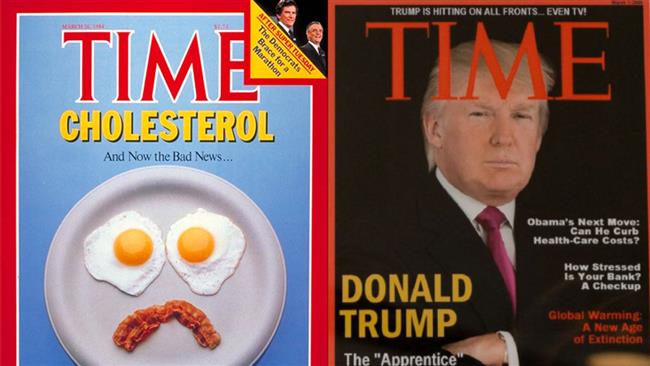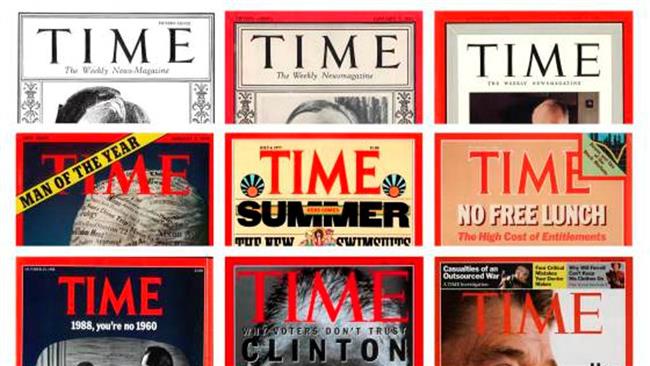Araweelo News Network

An original TIME magazine Cover from the 1980s (L) vs. a fake one, featuring US President Donald Trump
Washington(ANN)-President Donald Trump’s fake cover on a TIME issue has triggered clarification from the magazine about how to tell bogus ones from originals.
The magazine published a “how to” on Wednesday to help readers identify fake covers like the one displayed at Trump’s golf clubs recently.
The Washington Post reported Tuesday afternoon that copies of the fake cover were put on display at the Trump Organization’s golf clubs.
Dated March 1, 2009, the cover was never published by TIME.
“I can confirm that this is not a real TIME cover,” said Kerri Chyka, a spokeswoman for the magazine.
The cover was emblazoned by the president’s name, reading “The ‘Apprentice’ is a television smash!”
At least four Trump-branded golf clubs reportedly displayed the cover, while another one was displayed at Trump’s resort in Ireland.
Trump’s Turnberry club in Scotland also removed a version of the cover a few weeks ago without explanation.
In a Wednesday article titled, “How To Spot a Fake TIME Cover,” D.W. Pine, TIME’s creative director who has designed more than 400 covers, elaborated on some of the key flaws in the design of the fake cover, including , the logo being too large and placed too high.
That misplacement “wouldn’t leave enough room for the three-line ‘rooflines’ referring to other stories in the magazine, which was also used during that period,” Pine wrote.

From top left: The first cover of TIME from March 3, 1923. The first red border on Jan. 3, 1927. New border design in Oct. 3, 1938. Logo changed in Jan. 3, 1972, then again in July 4, 1977. A white outline was added in Oct. 12, 1981. It was then removed starting with the Oct. 24, 1988 issue. The current logo, at a size that spanned the width of the cover, was first implemented in April 20, 1992. The first issue of the redesign was Mar. 26, 2007. (Photo via TIME)
Also, in the case of the fake Trump cover, the head would have likely been silhouetted over the logo, creating what many people refer to as ‘devil horns.”
Overuse of exclamation marks was another point, characteristic of texts previously produced by the Trump administration.
“Exclamation points and question marks are another thing — particularly the four (!) in use on the fake Trump cover,” Pine wrote.
Since the 2016 campaign, Trump has repeatedly used the term “fake news” largely for any coverage criticizing him or his allies.




